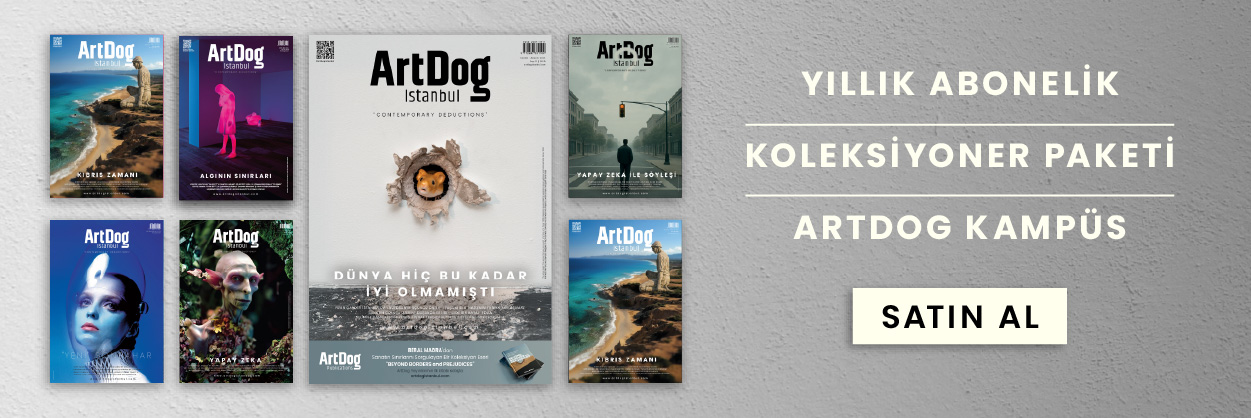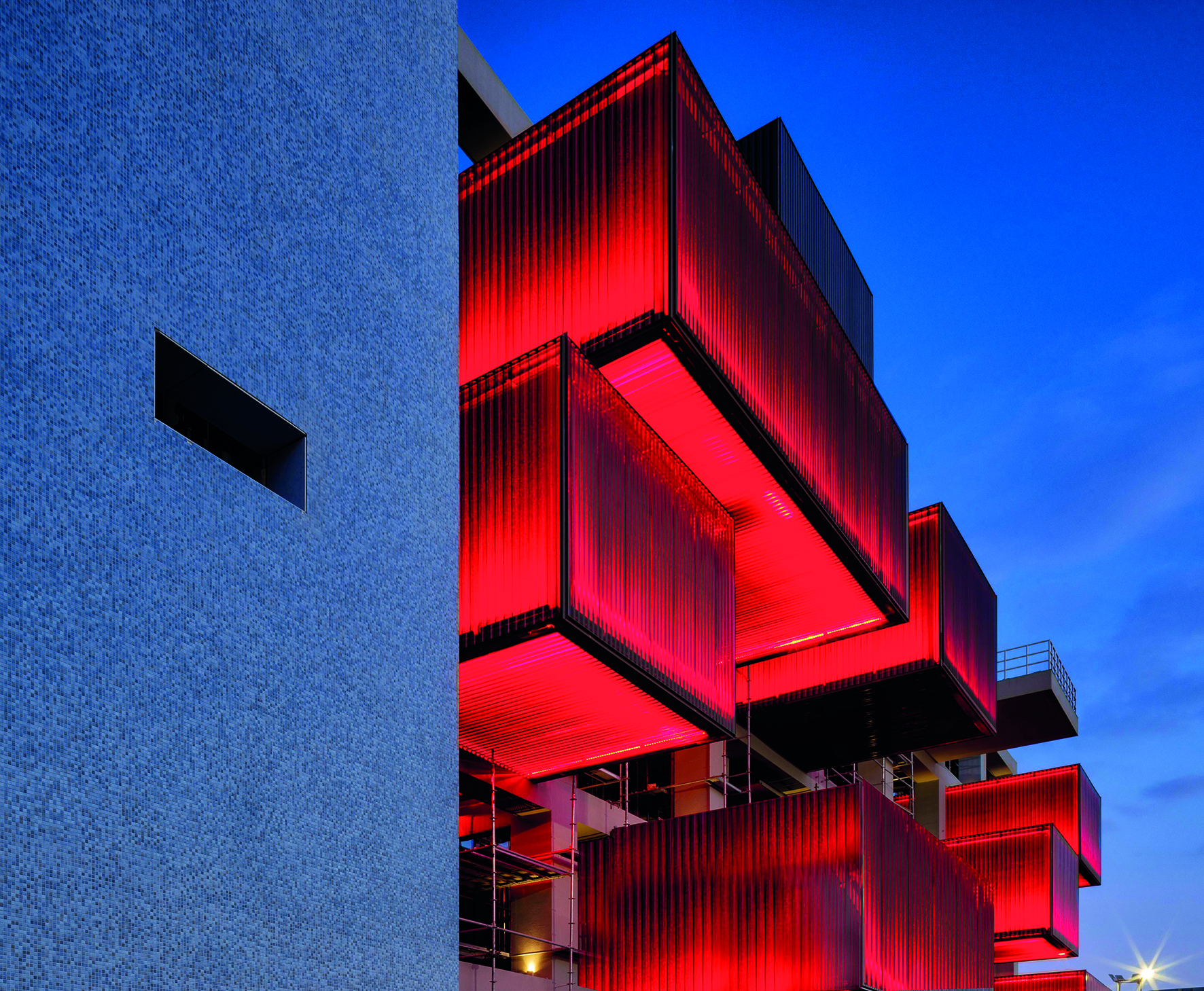As an architect, Emre Arolat is a man of detailed and innovative projects. His aim to search and find new perspectives is endless. His way of looking at things varies between philosophy, art, urban culture, technical approaches, and more. His creative process is one of importance and detail, bringing forth a journey of ideas along the way. His ability to link architecture with philosophy, urban culture, and design has allowed him to evaluate the city’s new additions in detail. His projects are among the most well-known architectural structures in all of Turkey and in Istanbul. ‘‘At Emre Arolat Architecture (EAA), we tend to take each project as a research project. For each project, we first create a design basket, in which we collect data and add awareness to the project. After that, we start to design and draw. Most architects think as they draw designs, but I prefer to think before acting for most of the projects,’’ said Arolat. One of Arolat’s most controversial projects, the Sancaklar Mosque, evolved through a long thinking process. He did not draw anything for four months, and only read and thought about the project until he found the right way to express the mosque in a philosophical sense. His goal is always the same. Arolat tries to define and express an architectural design as an intellectual world. As he creates and designs he adds together the notions of history, culture, and philosophy. Arolat is an architect who tries to fulfill his projects from an intellectual grounding.
‘‘I always try to fulfill the projects with intellectual backgrounds, and try to figure out the real essence of the idea that’s in it. I am not saying we are creating a certain typology, but I tend to create an intellectual infrastructure for spaces,’’ Arolat said. According to him, an architect should have a worldview and an intellectual framework. ‘‘An architect should follow a thought process filled with design and an architectural path. But very few architects follow this path. Not many architects follow their path of creativity. Because it is a risk to produce your architectural world, stepping aside from the bombardment of data and become original. If an architect wants to be like that, then he or she has to see each project as a research project,’’ Arolat said. But not everyone is destined to become an architect. It is hard, and facing these difficulties a necessity..

A far-fetched project: the Istanbul Museum of Painting and Sculpture
Arolat, on the other hand, takes the long and arduous path; one that is faced with challenges. His project for the Mimar Sinan University’s Istanbul Museum of Painting and Sculpture may be one of the most challenging projects he has ever done. The museum was once a large storehouse in the 1950s. For Arolat, the most crucial point was its concept project, made by Sedat Hakkı Eldem. As a building, it was a typical example of Istanbul’s architectural style in the 1950s. Another important element to consider was the building’s environment. In the area around the museum, the Meclisi Mebusan Street is going through a major urban transformation project. ‘‘While I was designing and constructing the museum, we did not know what would become of the urban transformation in Karaköy and nearby. The structure was already there, and it contained a certain level of architectural and collective memory. Our question was; is it possible to keep this architectural memory and pass it on to the next generation?’’ Arolat remembers. As a result, Arolat endeavored to keep the museum’s valuable concept design as it was. ‘‘Because if we are to talk about an urban memory, then we must know that this depot was a typical structure from the 1950s. From that day, it has stayed as it was. But when we designed the project and presented it to the Cultural and Natural Conservation Board, they asked us why we wanted to keep this building. I always value Republican era buildings and 1950s architectural design styles. I think keeping that structure is an achievement for the urban heritage and collective memory of the city,’’ Arolat said.
“According to Arolat, Istanbul is a city of layers. There are layers of culture, layers of heritage, layers of different eras, all existing as one in the city.”
According to Arolat, there is a tendency today to get rid of the signature architectural structures of the Republican era. People tend to think of these structures as ugly, he said. ‘’However, I think they are important structures to keep the collective memory alive,’’ Arolat added.
Arolat says this is a very natural way of looking at the architecture, and that we can observe the same tendency abroad. ‘‘I have witnessed the same approach when it comes to the National Theatre in London. I have seen that many people dislike the structure because of its ‘brutalist’ design. On the other hand, we should always remember that these kinds of structures represent an important part of our urban culture.’’
Arolat had been criticized for conserving the original structure of the museum. ‘‘I have renewed the front side of the museum and once again, many people have criticized me,’’ Arolat says, but insists he is not afraid of critics and criticism. ‘‘In a way I know that if I am to work with these kinds of structures – Istanbul’s old, historic cityscapes- I will always a target of criticism.’’ However, Arolat is an audacious architect while handling criticism. ‘‘For me, the most important thing is the clarity of my conscience,’’ he says.
Keeping Urban Memory Alive
In a way, conserving old structures and professionally redesigning them helps keep the city alive. Somehow, it is a way to rediscover the city and maintain Istanbul’s urban memory.
According to Arolat, Istanbul is a city of layers. There are layers of culture, layers of heritage, layers of different eras, all existing as one in the city. This is what we call Superimposition. It is the act of placing one thing over another, in such a way that all layers are still visible. For example, when we see old buildings and newly built high-rises grouped together along the skyline, they somehow appear in harmony. Not all cities have that touch, he says. Istanbul, on the other hand, handles this superimposition very well by keeping the old and the traditional together, but adding new spices.
‘‘The crucial thing is to make these places public spaces. They have lost their uses a long time ago. In this case, the architectural space and its interpretation has not come to the forefront. It’s more importantly a matter of management.’’
Of course each new project is a challenge, and each challenge brings a new one. Arolat is very interested in urban spaces, and how they are used by the people living in the city. There are two major projects in Istanbul at the moment; Galataport, a global project providing access to the Karaköy coastline for the first time in 200 years, and Tersane (Shipyard), a development on the coast of the Golden Horn in what was once one of the biggest shipyards on the Mediterranean Sea. Arolat is encouraged by the prospect that people of the city will be able to enter and use these spaces.
‘‘This is a matter of balance between consumption and production,’’ says Arolat. He notes that these two spaces are in large, central spaces, and after these projects are complete, the spaces can be used by the public. ‘‘The crucial thing is to make these places public spaces. They have lost their uses a long time ago. In this case, the architectural space and its interpretation has not come to the forefront. It’s more importantly a matter of management,’’ Arolat says. At the end of the day, they will be open to the public; and how it will be managed will matter in the future.
This is a part of the system and this is how the system works. If there is a large portion of space that is not used in the city, it is usually transformed to be accommodating. ‘‘If a shipyard is not working today, it should be transformed. The same thing is true for Galataport. The depot structures inside this space are not used anymore, so they need to be remodeled and the system goes on… and so they become useful places for everyone in the city.’’
The Galataport campus will include two major museums: the Istanbul Museum of Painting and Sculpture, designed by Arolat, and İstanbul Modern, a still unfinished project designed by Italian architecture Renzo Piano There is no doubt these projects might come with social dilemmas, Arolat says, but if we want to know how these projects will contribute to urban life, we should wait and see. We can only know when these areas are open and start to live with the people of the city (becoming public spaces). ‘‘In this case, it’s not only architectural construction that matters, but also how it’s managed,’’ says Arolat. That’s when we will see the reality of these projects, he adds. The key point is to gather different social groups in one space and let the space evolve on its own.
‘‘If a shipyard is not working today, it should be transformed. The same thing is true for Galataport. The depot structures inside this space are not used anymore, so they need to be remodeled and the system goes on… and so they become useful places for everyone in the city.’’
As an architect, Arolat always sees the critical points of a project. For him, it is a necessity to make a project gentle, modest, and respectful. I always say that as architects, we are destined to become agents of the neo-liberal system, and other architects get angry with me. However, it is also our job to make a project gentle and down-to-earth, for everyone in the city. Arolat also says these projects bring a lack of opportunities for critique. ‘‘We need to criticize these projects from different points of view. However, instead of criticizing it in the right way, we focus on whether they should exist or not,’’ he stresses.

The Reality of Architecture: Books for Future Generations
During the beginning of the 2000s, the EAA bureau has become the first Turkey-based architectural firm to be presented in a book published by Rizzoli Publishing House. The book was written by Philip Jodidio and Süha Özkan. This year, the book was republished as an updated version.
The book is a complete volume on the buildings and urban projects by Emre Arolat Architects (EAA), says Arolat, noting that it was an important success for the bureau to be presented in such a book.
The book is almost proof of how Emre Arolat approaches architecture. His way of seeing design, and throwing his remarks and comments into the world comes to the fore in these global and local projects. Highlighting 32 projects across Turkey, England, Portugal, and the United States, the book contains projects like the award-winning Sancaklar mosque and The Museum Hotel Antakya, a hospitality center that uses a novel design strategy, straddling archaeological findings. Other projects include the innovative Istanbul Museum of Painting and Sculpture, which will historically document and display the largest collection of paintings by Turkish artists; and the Abdullah Gül Presidential Museum and Library, the first presidential museum of Turkey. New photography for each project is accompanied by the architect’s drawings and plans.











